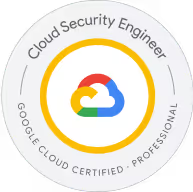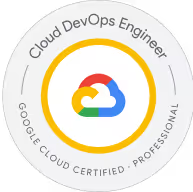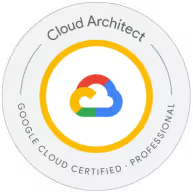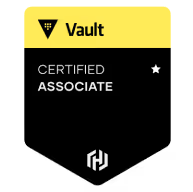
We Help Business Modernise Their Systems And Infrastructure To Improve Agility, Scalability and Security.
System modernisation is the process of updating or changing an organisation's technology infrastructure and applications to make them more modern, efficient, and secure. It is a critical process for engineering leaders to undertake to ensure their organisations remain competitive and innovative.

Benefits To System Modernisation
Modern technologies and architectures can help organisations to be more agile and scalable, allowing them to respond to changing market conditions and customer needs more quickly and efficiently.
Modern technologies and practices can also help organisations to enhance their security posture, protecting their data and applications from cyberattacks.
Technology modernisation can also help organisations to reduce their IT costs by eliminating legacy systems and processes, and by taking advantage of cloud computing and other cost-saving technologies.
Technology modernisation can also help organisations to gain access to new technologies and innovations, which can give them a competitive advantage in the marketplace.
HOW TO MODERNISE YOUR TECHNOLOGY
System Modernisation, a Journey, Not a Project?
System Modernisation is essential for businesses to take advantage of the flexibility, scalability, and security of the cloud. However, it can be a daunting task, with multiple approaches and technologies to choose from.
At Deimos, we see system modernisation as a journey, not a project. We start by working with our clients to understand their business goals and the current technology landscape. Once we have a good understanding of their needs, we develop a customised modernisation plan that takes into account their budget, timeline, and risk tolerance.
Our system modernisation approach is based on the following principles:
We believe in a phased approach to modernisation, allowing our clients to see value early and often.
Security is at the core of everything we do. We implement best-in-class security practices throughout the modernisation process.
We recognize that there is no one-size-fits-all approach to modernisation. We work with our clients to develop a solution that meets their unique needs.
We design and implement solutions that are scalable to meet our clients' future growth needs.
We understand that the system modernisation journey can be complex and challenging. That's why we partner with our clients every step of the way, providing guidance, support, and expertise.
The first step in any modernisation journey is to assess your current technology landscape. This includes identifying your legacy systems and applications, as well as your current infrastructure and security posture. Once you have a good understanding of your current state, you can start to develop a plan for modernisation.







Where do we start?
The first step in any system modernisation journey is to assess your current technology landscape. This includes identifying your legacy systems and applications, as well as your current infrastructure and security posture. Once you have a good understanding of your current state, you can start to develop a plan for modernisation.
Your system modernisation plan should include the following:
What do you want to achieve with modernisation?
How long will the modernisation process take?
How much will modernisation cost?
How much risk are you willing to accept during the modernisation process?
What technologies and methodologies will you use to modernise your systems and applications?
Once you have a plan in place, you can start to implement it. This is where Deimos really shines. We have a team of experienced engineers and architects who can help you with every step of the modernisation process, from planning and design to implementation and support.
system MODERNISATION STRATEGIES
How We Go About Modernising Your Applications And Infrastructure
Lift & Shift is the simplest and fastest way to migrate applications to the cloud.
We do not consider this approach a modernisation, but instead see it as an enabler for your system modernisation journey.
The strategy involves moving applications and data to the cloud without making significant changes.
Even though the applications are not able to take the full advantage of cloud-native features and benefits, it enables the modernisation effort by making these features available to the team.
Replatforming involves moving applications to the cloud and making significant changes to take advantage of cloud-native features. This can be a good option for applications that need to take full advantage of cloud-native features and benefits.
Rearchitecting often involves large-scale rewriting of applications to make them more cloud-native.
These changes are done in an evolutionary manner, primarily focussed on addressing the immediate pain points.
This is the ideal strategy for applications that need to be made more scalable and resilient.
PRINCIPLES OF A MODERN APPLICATION
Principles That Ensure Your Applications Are Scalable, Maintainable, Fault Tolerant And Portable.
When modernising an application, our focus is to ensure that the application becomes scalable, maintainable, fault tolerant and portable. We achieve this by taking inspiration from the 12-factor App. Following the 12 factors described below:
Having one codebase but multiple deploys means that the same codebase is used for development, testing, and production. This helps to ensure that the app is always consistent across all environments.
The app's dependencies should be explicitly declared and isolated from the rest of the system. This helps to prevent conflicts and make the app more portable.
The app's configuration is stored in the environment, rather than in the codebase. This makes it easier to change the app's configuration without having to redeploy it.
All the app's backing services, such as databases and messaging queues, are treated as attached resources.
This will ultimately mean that your application is not tightly coupled to the specific backing services it uses. This makes it easier to scale your application and to make it more portable.
Setting up strictly separate build, release, and run stages helps to ensure that the app is always deployed in a consistent manner.
Executing the app as one or more stateless processes makes the app more scalable and resilient to failures.
When the app's services are exported via port binding, it becomes easier to deploy the app to different environments and to make it more scalable.
Scaling the app by making the process model elastic, will mean that the app can create more processes to handle more requests, without crashing.
Favouring disposability over immutability makes it easier to dispose of and replace app processes than it is to change them in place. This makes the app more resilient to failures and easier to scale.
Keeping development and testing environments as close to production as possible helps to reduce the risk of unexpected problems when deploying the app to production.
Treating logs as event streams rather than files, makes it easier to collect and analyse logs.
Through this approach, admin tasks are attached as one-off processes that are not run as part of the regular application processes, but as separate processes. This helps to keep the app's core functionality stateless and scalable.

why work with us?
We don’t just adhere to industry standards and best practices – we improve upon them, and it’s all for your benefit.
Our team comprises engineers with vast experience in modernising applications using various modern technology stacks.
We specialise in cloud-native architectures, building applications that benefit from cloud capability.
We have successfully helped numerous organisations on their modernisation journey.
We’re client-focused. Everything we do is driven with your goals in mind.
We collaborate with your team throughout the process to ensure that we design and deploy a system that meets your needs and is built on security, infrastructure, and observability best practices.
As one of the largest cloud-native engineering companies in Africa, we’ve helped hundreds of businesses to transform their organisation, and we’d love to work with you.
Cloud Client Testimonials
Hear What Our Clients Have To Say
cloud faq's
Got Questions? We Have Answers.
Engineers use a wide range of tools and technologies to manage large-scale computer systems, including automation tools like Terraform, and Crossplane, observability tools like Prometheus, and Grafana, and logging tools like Loki. They utilise CICD tools such as Gitlab Pipelines, Github Actions and Tekton for automating the build and release of software workloads.
They also use cloud platforms like Amazon Web Services (AWS) and Google Cloud Platform (GCP) to build and manage highly scalable and reliable systems.
Platform engineering is the practice of building, maintaining, and evolving the infrastructure and tools that developers use to build and deploy applications. Platform engineers focus on making it easy for developers to be productive and to build reliable and scalable applications.
Site reliability engineering (SRE) is the practice of applying engineering principles to operations, with a focus on developing and maintaining reliable and scalable software systems. SREs work closely with developers to ensure that applications are designed to be reliable and that they are deployed and operated in a reliable manner.
DevOps engineering is a set of practices that combines software development (Dev) and information technology operations (Ops) into a single team. DevOps engineers focus on automating and streamlining the software development and deployment process.
Cloud-native engineering is a modern approach to software development and infrastructure management that is based on a set of key principles, including microservices, containers, infrastructure as code, declarative configuration, and continuous integration and continuous delivery (CI/CD). These principles help to create infrastructure and applications that are scalable, reliable, secure, and agile.
Cloud-native infrastructure engineering is the practice of designing, building, and managing cloud-based infrastructure that is scalable, reliable, and secure. It is based on a set of principles and practices that are specifically designed for the cloud environment.
Cloud Resources
Expand Your Knowledge Of The Cloudverse
get in touch
Let's talk Cloud Solutions
If you're ready to take your business to the next level and focus on what matters most - achieving your objectives, then it's time to leverage the power of our Managed Platforms.
Schedule a free consultation with us today and let us show you how we can take care of your needs, so you can concentrate on growing your business!













.avif)





